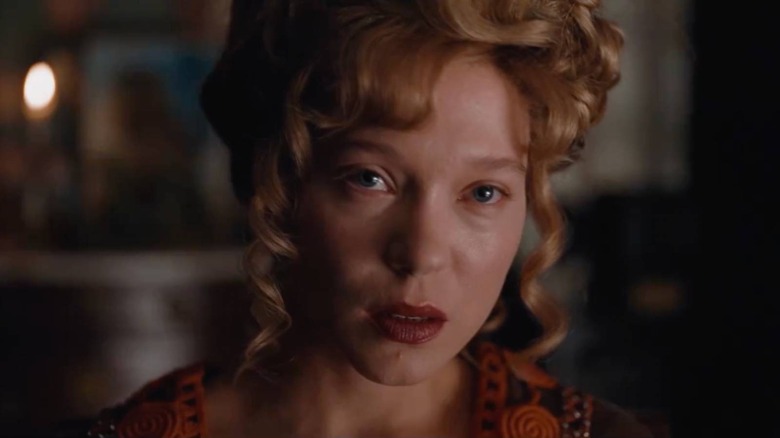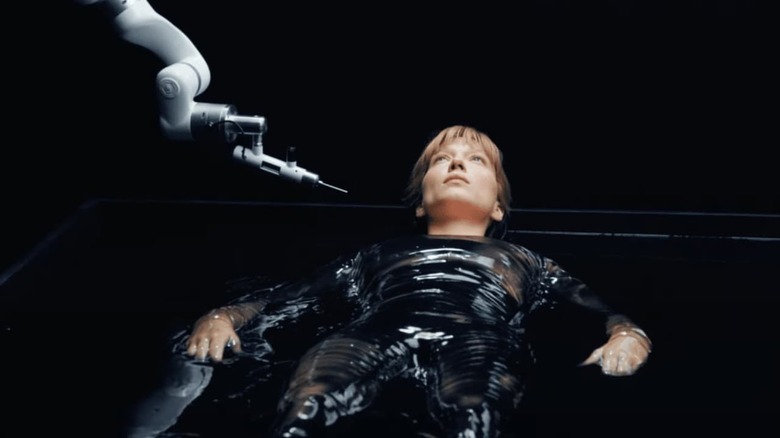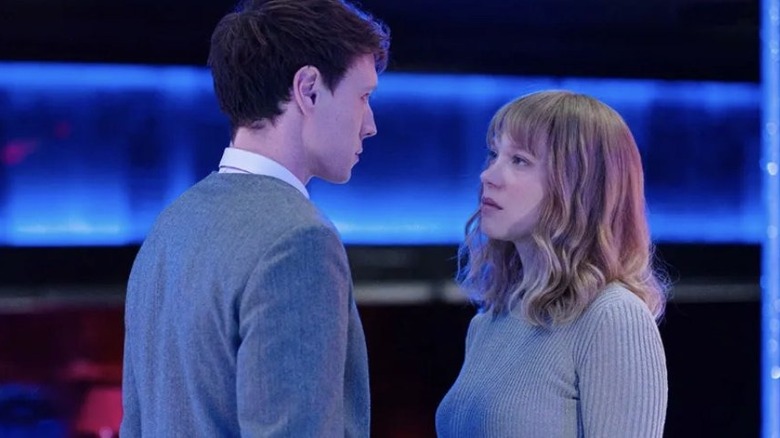Sorry, Marvel: A French Arthouse Movie Just Totally Reinvented How To Do A Credits Scene
As most connoisseurs of cinema already know, the end credit roll is a relatively recent addition to the medium. The reasons for this are too lengthy to go into here, but suffice to say that films used to end very definitively and, at least for those of us raised in a world where end credits were already a thing, quite abruptly, sending audiences out of the theater with a brusqueness not unlike a train disembarking.
Ever since end credit rolls became commonplace, filmmakers have experimented with finding ways of extending the cinematic experience throughout their duration rather than treating them the way so many moviegoers tend to: as mere legally-mandated appendages to a movie. While even the most basic film includes music during the end credits so as to help keep the roll a part of the movie, some go above and beyond that, including deleted material, bloopers, or entire additional scenes during and/or after the credits.
Of course, one of the biggest proponents of the mid- and post-credits scene is the Marvel Cinematic Universe, which began due to producer Kevin Feige's love of the technique as seen in John Hughes' "Ferris Bueller's Day Off." Given that the MCU has now trained modern audiences to look for credits scenes in lots of films, not just Marvel movies, the credits scene isn't as much of a surprise as it used to be. Enter French director Bertrand Bonello; his latest film, "The Beast," includes a mid-credits scene that adds an extra layer to the technique as well as the movie itself, and could reinvent how credits scenes are used in the future.
The credits scene as extension of a film
After a decade-plus of MCU films, the credits scene has mostly coalesced into two categories: either it's a scene that teases plot elements or characters to be seen in a future film, or it's a scene where a gag or subplot is continued or paid off. In every case of a credits scene, the scene is a continuation of the film where the credits themselves act as a temporary interruption.
Bonello ingeniously sidesteps this "interruption" by full-on lopping the credits off of his film entirely. While other provocateur filmmakers have experimented with moving credits around (especially the French-based Gaspar Noé, who places the entire credit roll at the start of his films "Irreversible" and "Climax," thereby making the films themselves technically one long post-credits scene), Bonello's concept lies within using modern technology. At the end of "The Beast," a title card comes on screen that features a QR code beneath the word "Générique" (credits). If you're quick enough to pull out your smartphone, scan the code and follow the weblink it generates, then you can view the credits of the film (and the mid-credits scene) either immediately or at your leisure.
The decision behind this might have been purely motivated by the fact that "The Beast" is not a short movie at 145 minutes, and given that the credits (plus the scene) are an additional 8 minutes long, perhaps Bonello and company simply saw an option to cut their runtime down for theaters. Yet the freedom the QR code link provides makes viewing the credits and the credit scene even more of a direct personal choice, similar to how some vintage movie websites acted as extensions of a film (like those for "Memento" and "Donnie Darko"). Put another way, if the MCU credit scenes are Easter eggs given as a reward for sitting through the credits, "The Beast" treats its credit scene as a more traditional Easter egg hunt: you have to make the choice to look for it.
Putting the pieces together of 'The Beast'
"The Beast" is a compelling, romantic, thought-provoking, and at times terrifying film. It takes place over three separate time periods, and is ostensibly about a woman, Gabrielle (Léa Seydoux), in the year 2044, where AI has taken over and created a process to "purify" human beings of their emotions in order to make them more perfectly productive workers. Part of this process involves an individual investigating their past lives to examine what traumas still haunt them through their DNA, and Gabrielle looks through two time periods in particular — 1910 and 2014 — in which she has very different yet oddly familiar encounters with the same man, Louis (George MacKay). Based loosely on Henry James' 1903 novella "The Beast in the Jungle," "The Beast" is a combination of romantic fatalism and existential dread; a sort of "Past Lives" meets "Twin Peaks: The Return."
Bonello constructs the film in a deliberately fluid fashion, where each time period gets its own space to play out the majority of its narrative, yet moments from one bleed into the others freely. As such, the film is a bit of a puzzle, which each piece of information raising new questions while providing a few more answers. The mid-credits scene is a continuation of this theme; depending on your own interpretation, it's either a payoff or a question mark. In either case, the scene's inclusion and its existence outside of the body of the movie itself is a rather ingenious extension of the experience of the film: like Gabrielle, we have to make the choice to investigate, to learn more, even if we may not like what we end up discovering. Like the citizens of 2044, the credits themselves are strangely detached from everything yet still connected to the past somehow.
While many will likely see the use of a QR code link to a credit roll as some sort of disruption, this shouldn't be a technique for all films to adapt (besides, if they did, such a "disruption" would disrupt a disruption still in existence: that of leaving during the credits, ostensibly before everyone else does). What it should be seen as instead is a new way for filmmakers to interact with their audience, to extend the experience of a film beyond the cinema. Whatever the case, it's great to see film remain a medium that's ripe for experimentation.
"The Beast" opens in the United States on April 5, 2024.


